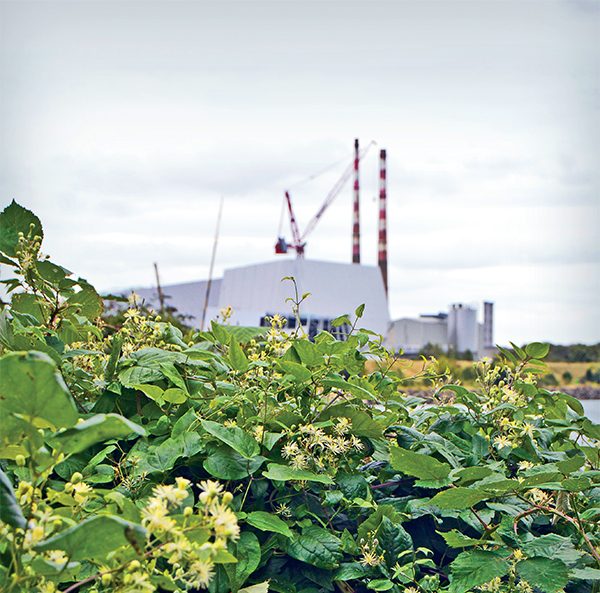
Pictured: Japanese knot weed. Photo: Kevin O’Gorman.
NewsFour has discovered a large colony of Japanese Knotweed (Fallopia Japonica) thriving in the Irishtown Nature Reserve, close to the Shelley Banks.
Japanese Knotweed is probably the most invasive plant known in Ireland and the UK today, with some towns such as Skibbereen and Clonakilty in West Cork virtually under siege from this vigorously growing menace.
Japanese Knotweed was introduced as an ornamental plant in the 19th Century from Japan. Since its introduction it has spread across the country, colonising many watercourses, transport routes and waste grounds.
In built-up environments it causes serious damage to houses, buildings and infrastructure, growing through foundations, concrete, tarmac and other hard surfaces.
It grows most vigorously in areas where its growth is unrestricted and forms dense thickets that endanger native wildlife and vegetation. Alongside waterways and railway lines it blocks routes used by wildlife, damages flood defence structures and reduces the capacity of channels to carry water overflows. When it dies back in the winter months it can leave watercourses and river banks vulnerable to erosion.
Once established, it is difficult to eradicate. The plant spreads easily through the movement of it’s rhizome (the underground root), plant and crown fragments or cut stems.
If you find Japanese Knotweed on or close to your property, it is important that you take measures to prevent any further spread of the species as soon as possible. Do not cut or chip the plants. Even tiny fragments can regenerate new plants. Do not dig, move or dump soil which may contain plant material as this will contribute to its spread. Plants should be treated as soon as they are identified and before the plants and the rhizome system become established. The longer you leave it, the harder it is to treat.
It is advised to get expert help before trying to eliminate Japanese Knotweed but the good news is that with an appropriate treatment plan it can be controlled successfully. Herbicides, such as those containing glyphosate as the active ingredient should be applied by a qualified person. With follow-up treatments and the careful disposal of dead plant material and contaminated soil the problem can be eliminated over time.
The optimum time of application of the herbicides is from mid to late September before the foliage starts to die back. A follow-up treatment may be required in early Spring. Treatment may need to be repeated over several years until no regrowth is observed for complete eradication to be achieved.
Glyphosate is known to be residual in the environment for 24 to 48 hours after application so use it carefully. Since November 2015 anyone who purchases herbicides/pesticides authorised for professional use must ensure that the intended end user holds the relevant specified certificate(s).
Don’t be tempted to take a cutting from the wild plants as it is illegal to grow or spread Japanese Knotweed. Don’t dump waste material from the plant in the countryside or dispose of it at a landfill site without informing the management of the site. To move soil in the Republic of Ireland that contains Japanese Knotweed waste you will need a license from NPWS. Plant material should not be composted as it may result in further spread.
So serious is the Japanese Knotweed problem at present that Fine Gael Senator, Tim Lombard, has called for a national task force to be formed to tackle knotweed. In the UK a budget in excess of £5 billion per year has been allocated towards addressing the problem.
By Jennifer Reddin



